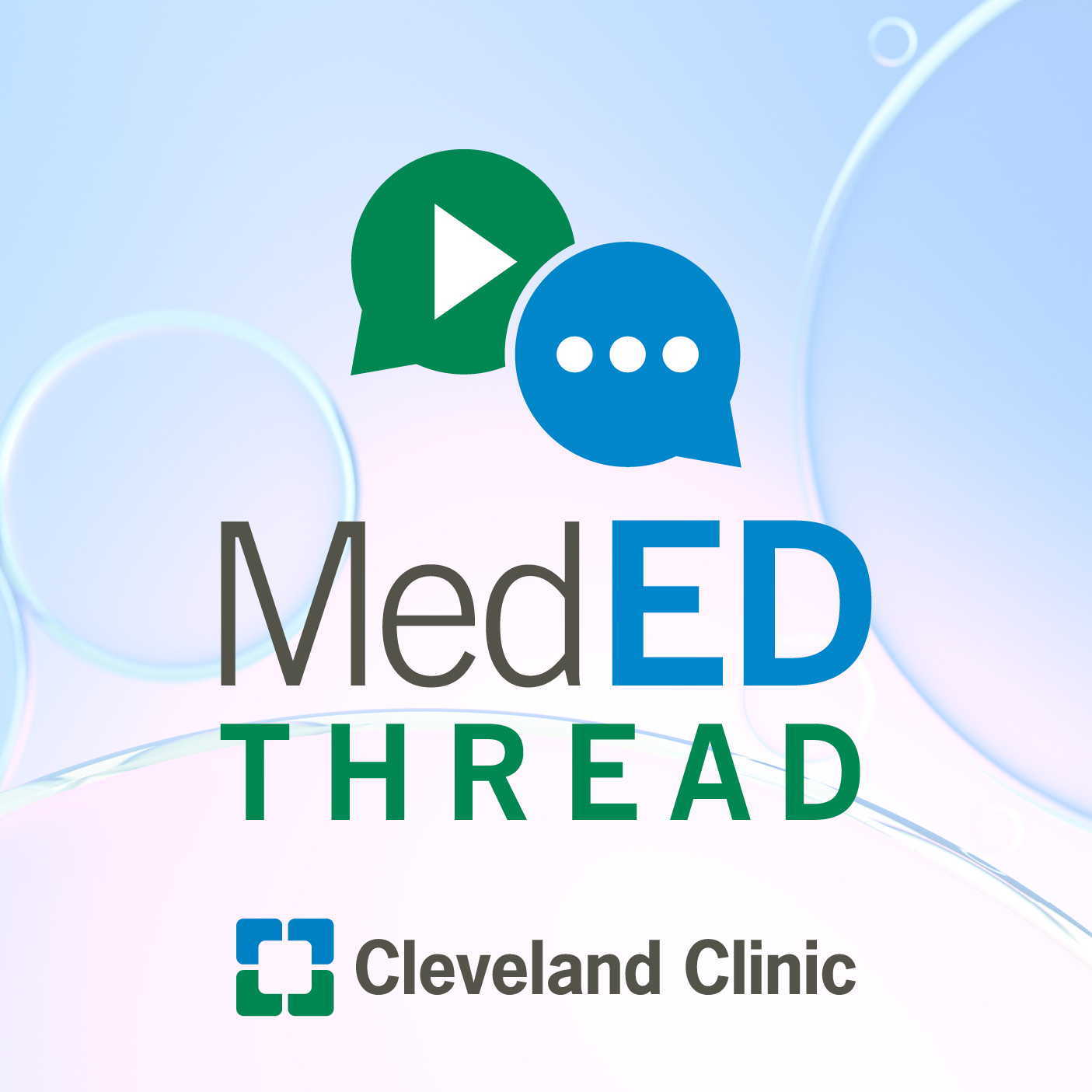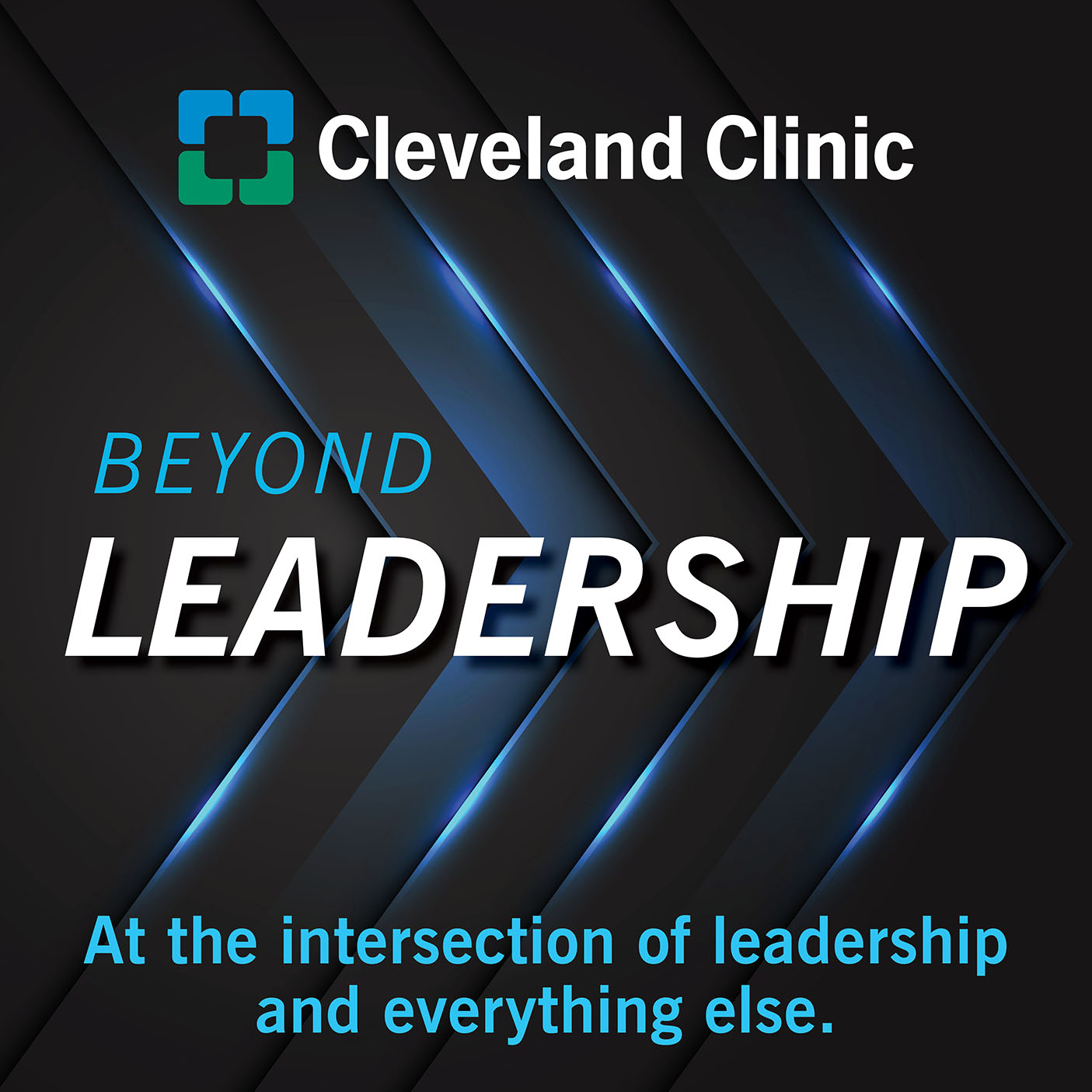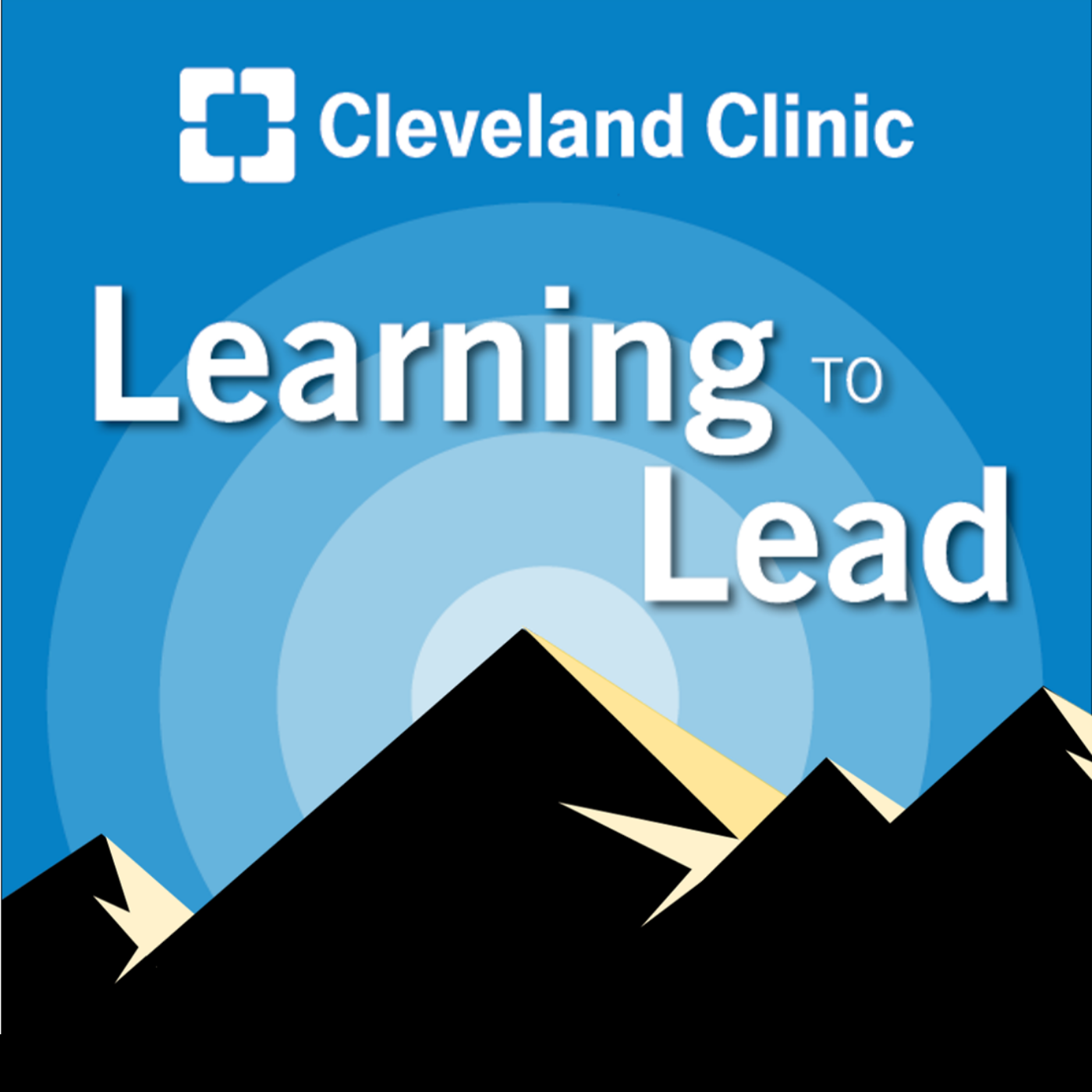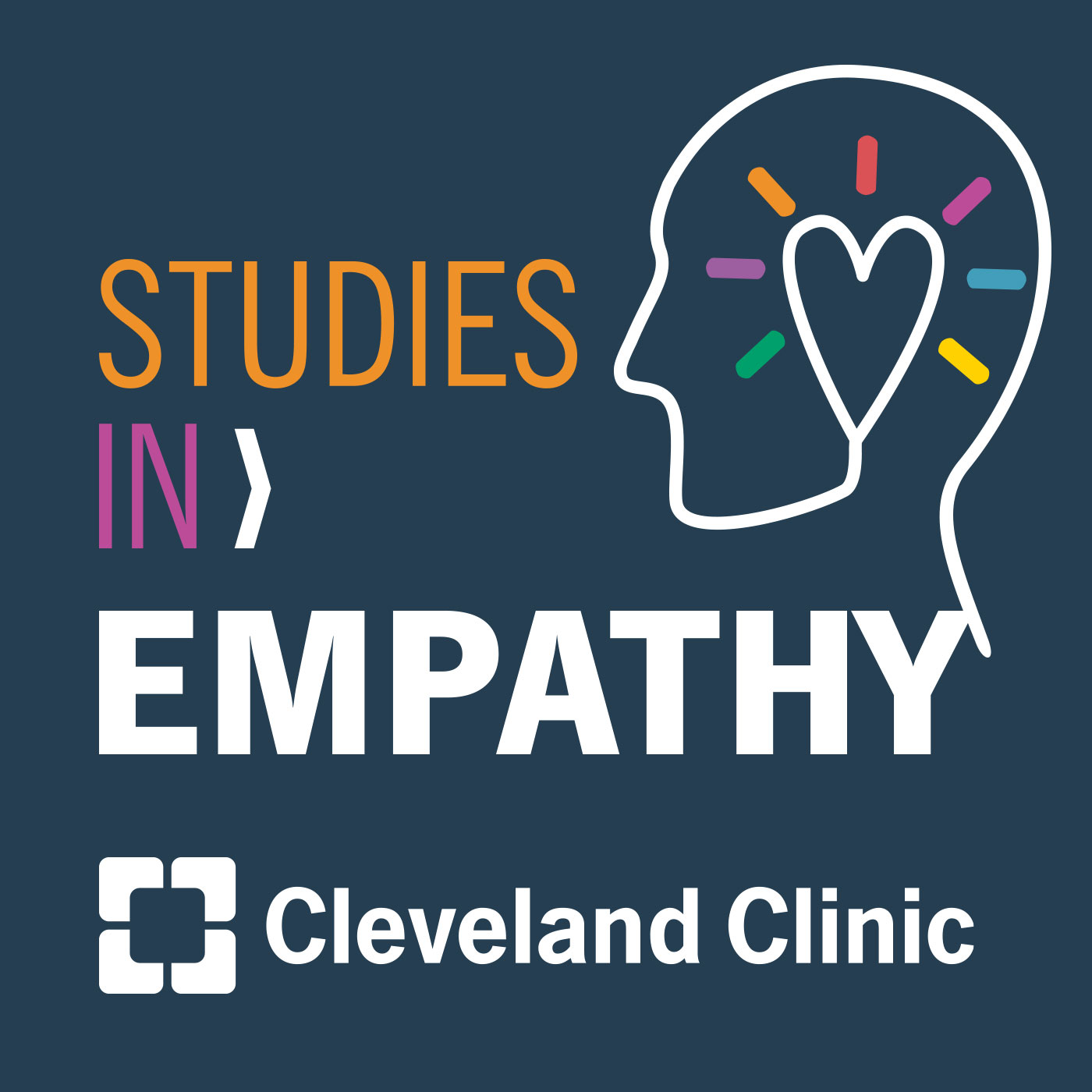Growing Education at a Large Academic Medical Center
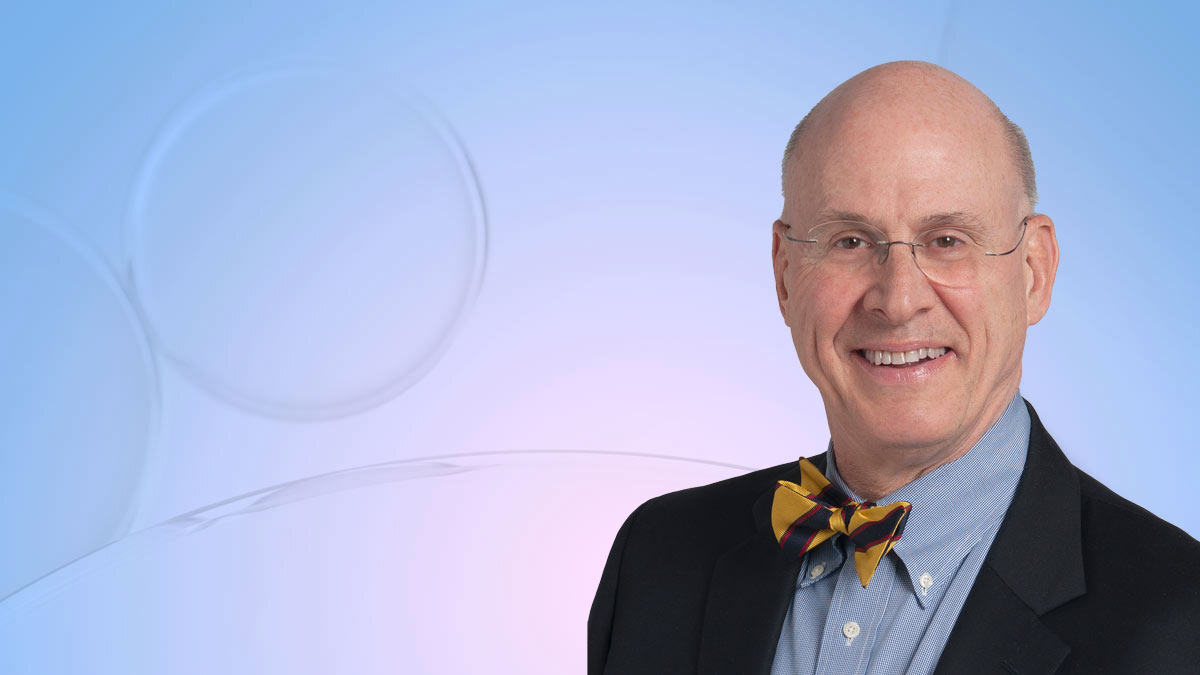
Subscribe: Apple Podcasts | Podcast Addict | Spotify | Buzzsprout
Growing Education at a Large Academic Medical Center
Podcast Transcript
Speaker 1:
Hello and welcome to MedEd Thread, a Cleveland Clinic Education Institute podcast that explores the latest innovations in medical education and amplifies the tremendous work of our educators across the enterprise.
Dominique Pishotti:
Hello everyone. Welcome to today's episode of MedEd Thread. I'm your host, Dominique Pishotti, Department Manager within the Education Institute at Cleveland Clinic. For today's session, we will be joined by Dr. James Stoller, Chairman of the Education Institute. Today Dr. Stoller will speak with us about growing education at a large academic medical center.
Welcome to the podcast, Dr. Stoller. We're very excited to have you.
Dr. Stoller:
Oh, thank you very much. I'm delighted to be here.
Dominique Pishotti:
So, before we hop in and talk about growing education at a medical center, can you share with us a little bit about yourself and where you're from?
Dr. Stoller:
Sure, Dominique. I'm a lung doctor and I'm at the Cleveland Clinic of course. And I've been here now for 36 years. In addition to that, over the last 12 years or so I've had the privilege of serving as the Chairman of our Education Institute. And of course the Education Institute is our fully integrated educational structure that houses 11 different centers that address different educational audiences. These include the medical school, graduate medical education, continuing medical education, allied health education, simulation, the library, the Journal of Medicine, international medical education, et cetera. So, it's quite a wide-ranging group. Again, fully integrated under the umbrella of the Education Institute.
Dominique Pishotti:
So, are you able to share with us a little bit of the history of Education Institute? You shared that it's very complex, but how did it start and can you share with us how it's evolved over time?
Dr. Stoller:
Well, sure. Thank you for the question. So, education has been as you know in the DNA of the Cleveland Clinic. It's been part of the mission of the Cleveland Clinic since its inception in 1921. The mission of the Cleveland Clinic of course is tripartite, like all major academic medical centers are. The mission is caring for life, researching for health, and educating those who serve. With the latter, educating those who serve, defining the commitment to education which has been long standing. We started educating trainees in 1921 in fact. William O. Johnson and Charles Hartsock were the first two trainees at the Cleveland Clinic starting a tradition of well more than 17,000 alumni at this point who have come from all over the world and practice all over the world.
So, over the 101 years that we've been educating caregivers of all types, Dominique, we've evolved and my predecessors, the Chairs of the Education Institute, have added centers to the Education Institute as different learning communities have come online. So, for example, originally it was graduate medical education in 1921 and one of the founding fathers of the Cleveland Clinic, Frank Bunts, really established the Cleveland Clinic Education Foundation several years after the founding of the Cleveland Clinic. Again, doubling down on our deep commitment to educating those who serve.
Over time more than 75 years ago, continuing medical education was added. Then in 1931 the Cleveland Clinic Journal of Medicine, which falls under the Center of Scientific Publications today and so on. And of more recent vintage during my tenure, we've added the Simulation and Advanced Skills Center and our Center for Youth and College Education both of which represent more recent innovations and contributions to, to learning in the case of simulation, this is of course the way that healthcare providers learn today following suit from commercial aviation where safety begins in simulators. Every commercial airline pilot, Sully Sullenberger of Miracle on the Hudson fame was trained on a simulator under circumstances of adverse conditions. And so to is it true for doctors and nurses and respiratory therapists and allied health providers of all types today. And so the Simulation Center came on board now a decade ago on April 15, 2012.
And then of more recent vintage as we again doubled down on our commitment to encouraging young people to enter science, technology, and math, the STEM areas, we developed and consolidated our Center for College and Youth Education which delivers education in the public schools, in high schools, post college students wanting to do summer internships, et cetera.
So, education, again, longstandingly has been part of the mission of the Cleveland Clinic and it has grown over time to the current state of 11 centers addressing large variety of educational audiences in our, again, fully integrated structure.
Dominique Pishotti:
That's amazing. A hundred and one years of history of education embedded into the Cleveland Clinic. You mentioned that the core mission of the Education Institute is educating those who serve. Are you able to tell us a little bit more about the strategic initiatives for education here at the Cleveland Clinic?
Dr. Stoller:
Absolutely. So, as we think about our focus in education today, we really have three strategic themes. One is caregiver of the future. We're designing curricula to train healthcare providers, not necessarily for the healthcare needs of tomorrow, but the healthcare needs of a decade to two decades downstream. We're taking a quote out of the Wayne Gretzky famous hockey player's quote of "We're skating to where the puck is going." And so, we're designing curricula for the healthcare provider of the future.
The second of three themes is education is talent pipeline. So when we train medical students to become residents and residents to become physicians and nurses to become nurses and respiratory therapists to become respiratory therapists, we're naturally thinking about recruiting the best of these individuals to join us at the Cleveland Clinic. For example, we know that 30% of the current staff of more than 4500 physicians and scientists did some of their training at the Cleveland Clinic. So, this is a perfect example of education as pipeline. And so we think of the education mission as having pure benefit in and of itself, but it also has benefit to the organization to perpetuate quality and to recruit and retain the best of our students to join us. Again, another example, 22 of the alumni of the Cleveland Clinic Lerner College of Medicine, which has now graduated 14 classes, 441 individuals all together, 22 of those individuals have joined the staff at the Cleveland Clinic. About 20% of our medical students, 15-20% year over year, do their residency or fellowship training at the Cleveland Clinic. Again, examples of education as talent pipeline.
And the third major strategic theme beyond caregiver of the future and education as talent pipeline is global systemness in education. We are as you know a global organization. We have hospitals in Abu Dhabi, in London. We have clinic in Canada. We're all over the United States. In Florida, Las Vegas. Of course, throughout Northeast Ohio as is well known. And as these various components of the Cleveland Clinic development over time, there is of course the increasing appetite to engage in the educational mission of the Cleveland Clinic. So, global systemness of education, our third strategic priority, is about harmonizing and sharing best practices across all of these venues so that learners around the world can experience again, what we aspire to be the best of healthcare education.
Those are our three strategic initiatives.
Dominique Pishotti:
So, talking about the strategic initiatives and kind of going into the global systemness piece, it's clear that the Education Institute has had a hand in education throughout the globe. But can you share with us a little bit more about how you execute global systemness at a large academic medical center?
Dr. Stoller:
You know, it's hard and it's easy at the same time in terms of educating global systemness. It requires a culture of collaboration, which we enjoy in great volumes at the Cleveland Clinic. And as I mentioned, we also have a fully integrated structure on the main campus. So there are no silos within education as sometimes may exist in other centers where for example the medical school may be separate from the hospital. It may be separate from the sim center with different leadership. Because we're fully integrated, we enjoy a culture of great collaboration and sharing best practices.
So when we think of providing global systemness and harmonizing our efforts, we of course can organize ourselves to share best practices through a number of standing committees and working groups. One of which for example is our Global Education Optimization Group, what we call GEOG. And GEOG meets once monthly with educational leaders from around the globe in Cleveland Clinic facilities in London, Abu Dhabi, Canada, Florida, Northeast Ohio, et cetera, and systematically are engaged in talking about different educational audiences that we all serve in different ways and looking for opportunities to share best practices and harmonize our efforts across the globe.
And so we're actively engaged in these dialogues now in order to develop a needs assessment to optimize education. We are like many of course in search of being the best provider of healthcare education in the world. And this is a driving aspiration that we hold and in trying to perform global systemness, this is part of that mission. We want to touch as many lives just as we want to touch as many clinical lives as possible. So to do we want to touch as many learners as possible. And for example, one of our objectives and key results in education is what we call learner encounters. How many individuals do we touch educationally in the course of a year? Last year that number was more than 2.02 million learners. This year we're on track to touch more than 2.07 million learners, about a three to four percent increment year over year. And this is a product of the fact that we educate broadly, not only within of the confines of the footprint of the Cleveland Clinic in Northeast Ohio, but well beyond that. Nationally within the United States and internationally throughout the world.
So, executing global systemness requires a culture of collaboration and sharing, which we're very fortunate to enjoy at the Cleveland Clinic overall and certainly mirrored within the Education Institute. I hope that's responsive to your question.
Dominique Pishotti:
Absolutely. I think it's amazing that the target is 2.07 million learners for this year and we've reached targets similar to that number in the past and it, it continues to grow. It shows that there's quite a clear impact on the Education Institute's offerings and also just the Cleveland Clinic in general.
So, now that you've shared a little bit about the strategic themes and the history of the Education Institute. Is there anything else that I didn't ask you that you feel is important for listeners to know about growing education?
Dr. Stoller:
Well, you know, a story comes to mind to sort of put a face on this idea of, of touching learners around the world. My clinical partner, Dr. Tulmeda and I, about five years ago were giving lectures in India. And we went to Deli and at that time wanted to visit the equivalent to the Cleveland Clinic in India, which is the All India Institute.
And so we naturally as both lung doctors wanted to find the respiratory ward and we stopped a woman who was dressed elegantly in a sari, we didn't know her of course, and asked her if she could direct us to the thoracic ward, to the respiratory ward at the All India Institute. And of course she was gracious to do so and as we're walking with her, we're chatting. And it turns out she was a pediatric neurologist and when she asked us where we were from, we remarked that we were from Cleveland, Ohio, in particular from the Cleveland Clinic at which point she turned to us and said, "Oh, that's amazing, because I spent three months learning pediatric epileptology at the Cleveland Clinic" with one of the many gurus of pediatric epilepsy at the Cleveland Clinic and she did so in the context of participating in our Center for International Medical Education, one of the 11 centers within the Education Institute.
So here was a chance encounter halfway across the world in which we ran into a person whose career was materially influenced and undoubtedly all of the patients that she served and serves, continues to serve are materially influenced by the impact of the experience that she'd enjoyed when she was here in Cleveland, Ohio with us through a program in the Education Institute in the Center for International Medical Education.
So when sharing with you this anecdote I'm simply appreciating the poignancy of these experiences. These are not just abstract concepts on a table of organization. These are people whose careers we impact and in turn the patients who they serve. And so it's a tremendous opportunity for us to expand the already tremendous clinical impact and investigational impact of the Cleveland Clinic around the world by using education as another emissary of our mission. I hope that makes sense.
Dominique Pishotti:
Absolutely. I think that's amazing that just off-hand you met someone that has been touched and impacted by the Cleveland Clinic and is in turn impacting others based off of their education here at the Cleveland Clinic. That is truly an amazing, and amazing story.
So, with that, I feel we covered a lot of the important topics. We talked about the strategic themes. We talked about the Education Institute. You shared with us a little bit of a story. Is there anything else that you feel is important or any takeaways you'd like our listeners to have from this session on growing education at a large academic medical center?
Dr. Stoller:
Well, I would summarize the themes in the following way. I think excellence comes from passion. And you know, like many great academic medical centers we have a cohort of passionate educators many of whom also happen to be fabulous doctors, fabulous scientists, fabulous nurse, fabulous respiratory therapists, et cetera. But what drew us to a, an academic medical center like the Cleveland Clinic and like many academic medical centers is a passion to pay forward and to educate the next generation of caregivers. And so we enjoy a wonderful culture around tremendous support for education which is a recruiter and a retainer of talent.
And so I would say that creating a system that aspires to be the best healthcare education resource in the world requires great talent, a great culture, a great structure in which to exercise that mission, and I mentioned before our fully integrated model, which I believe differentiates us from many, although not all academic medical centers, and is a tremendous asset and really facilitates a deep passion that I and you as a member of the Education Institute and our many colleagues in the Education Institute all bring to our work every day. So we're all privileged for the opportunity to make this contribution through global healthcare and to make the world healthier and better, which is at the end of the day what we all committed to do as, as healthcare providers.
So it's a wonderful privilege and a wonderful opportunity. I would close with that sort of appreciative lens if you will.
Dominique Pishotti:
I could not agree with you more. Well, Dr. Stoller, thank you so much for sharing with us more about the Education Institute and the global impact that it has had. And to our listeners, thank you for being here with us today.
We look forward to talking with you all soon on the next episode. I hope you have a wonderful day.
Speaker 1:
This concludes this episode of MedEd Thread, a Cleveland Clinic Education Institute podcast. Be sure to subscribe to hear new episodes via iTunes, Google Play, SoundCloud, Spotify, or wherever you get your podcasts. Until next time, thanks for listening to MedEd Thread and please join us again soon.
